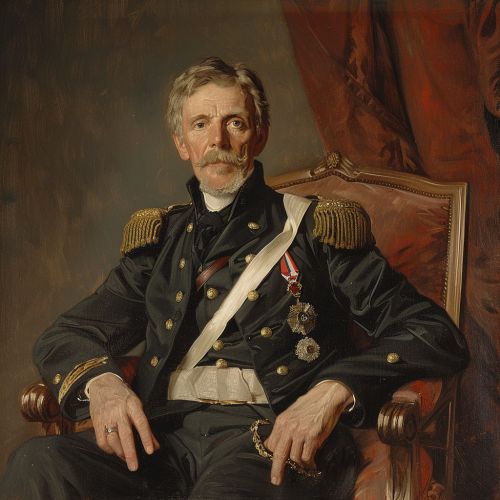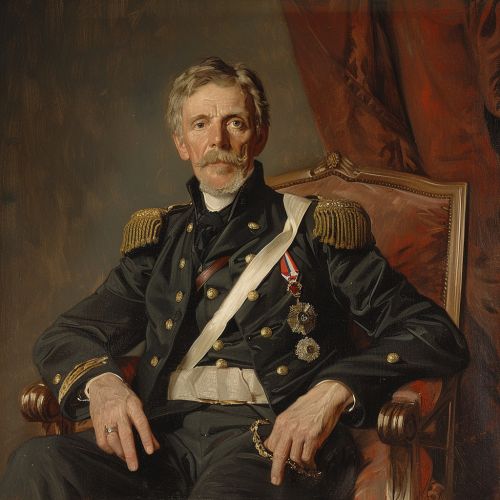Samuel Hunter Christie: Difference between revisions
(Created page with "== Early Life and Education == Samuel Hunter Christie was born on March 22, 1784, in London, England. He was the son of James Christie, the founder of the famous auction house Christie's. Samuel's early education was marked by a strong emphasis on mathematics and the sciences, which were burgeoning fields during his youth. He attended the prestigious Royal Military Academy, Woolwich, where he excelled in his studies and developed a profound interest in mathematical t...") |
No edit summary |
||
| Line 23: | Line 23: | ||
* [[Royal Military Academy, Woolwich]] | * [[Royal Military Academy, Woolwich]] | ||
[[Image:Detail-97227.jpg|thumb|center|Portrait of Samuel Hunter Christie, a distinguished mathematician and military engineer, dressed in 19th-century attire, seated with a serious expression.|class=only_on_mobile]] | |||
[[Image:Detail-97228.jpg|thumb|center|Portrait of Samuel Hunter Christie, a distinguished mathematician and military engineer, dressed in 19th-century attire, seated with a serious expression.|class=only_on_desktop]] | |||
== Categories == | == Categories == | ||
Latest revision as of 18:23, 26 July 2024
Early Life and Education
Samuel Hunter Christie was born on March 22, 1784, in London, England. He was the son of James Christie, the founder of the famous auction house Christie's. Samuel's early education was marked by a strong emphasis on mathematics and the sciences, which were burgeoning fields during his youth. He attended the prestigious Royal Military Academy, Woolwich, where he excelled in his studies and developed a profound interest in mathematical theories and their practical applications.
Academic Career
Christie's academic career began in earnest when he was appointed as a professor of mathematics at the Royal Military Academy in 1838. His tenure at the academy was marked by significant contributions to the field of mathematics, particularly in the areas of geometry and algebra. He was known for his rigorous approach to teaching and his ability to inspire students to explore complex mathematical concepts.
Contributions to Mathematics
Samuel Hunter Christie made several notable contributions to mathematics, many of which have had a lasting impact on the field. One of his most significant achievements was his work on the Wheatstone bridge, an electrical circuit used to measure an unknown electrical resistance by balancing two legs of a bridge circuit. Although the device is named after Sir Charles Wheatstone, it was Christie who first described the bridge in 1833. His work laid the groundwork for future developments in electrical engineering and instrumentation.
Another important contribution by Christie was his research on the magnetic properties of materials. He conducted extensive experiments to understand how different materials responded to magnetic fields, which was crucial for the development of early electromagnetism theories. His findings were published in several scientific journals and were widely recognized by his peers.
Military Service
In addition to his academic pursuits, Christie also had a distinguished military career. He served as an officer in the Royal Engineers, where he applied his mathematical expertise to various engineering projects. His work in the military included the design and construction of fortifications, as well as the development of new surveying techniques. Christie's ability to bridge the gap between theoretical mathematics and practical engineering made him a valuable asset to the Royal Engineers.
Later Life and Legacy
Samuel Hunter Christie retired from the Royal Military Academy in 1854 but continued to be active in the scientific community. He was a member of several prestigious organizations, including the Royal Society, where he was elected a Fellow in 1826. Christie's contributions to mathematics and engineering were widely recognized, and he received numerous accolades throughout his career.
Christie passed away on January 24, 1865, in London. His legacy lives on through his numerous contributions to mathematics and engineering, and his work continues to be studied and appreciated by scholars and practitioners in these fields.
See Also


